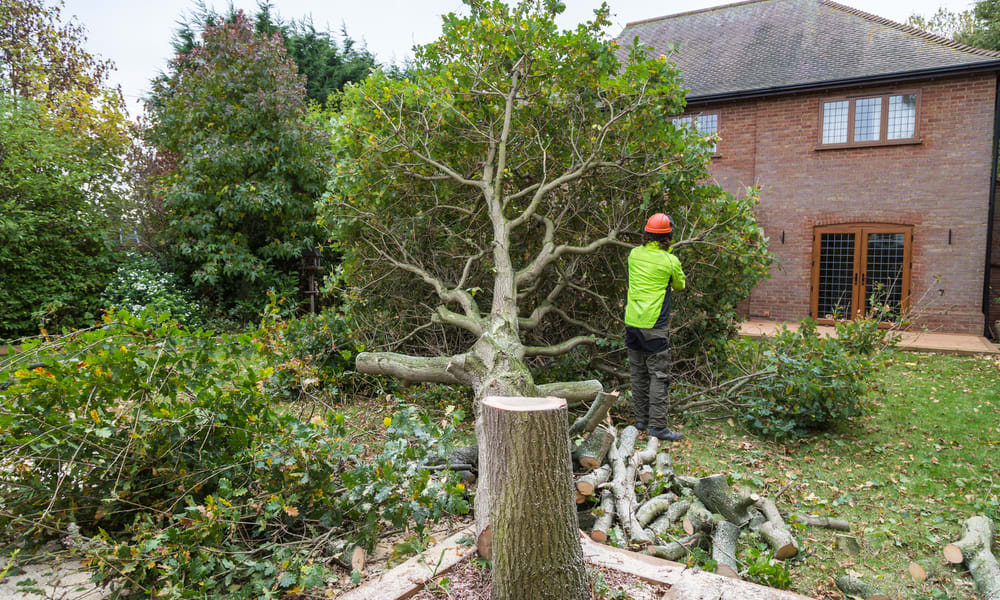Professional Tree Care: Key to a Healthy Landscape
Healthy trees need more than mowing and watering. Professional tree care—trimming, pruning, pest management, and certified arborist expertise—protects your property, improves curb appeal, and reduces hazards. Learn how expert tree services preserve tree health, boost landscape value, and integrate with other outdoor maintenance practices.

Professional Tree Care: Key to a Healthy Landscape
Trees are among the most valuable features in any yard or commercial property. They provide shade, improve air quality, increase property value, and contribute to a pleasing outdoor environment. However, keeping trees healthy and safe requires more than occasional watering and lawn upkeep. Professional tree services deliver targeted care—trimming, pruning, pest and disease management, and safe removals—that helps trees thrive while protecting people and structures.
How trimming supports long-term tree health
Trimming is a routine yet vital component of tree maintenance. It involves selectively cutting branches to improve a tree’s structure, vigor, and appearance. Regular, properly executed trimming provides several tangible benefits:
- Removal of dead, diseased, or damaged limbs that can become entry points for decay or create hazards
- Improved airflow and light penetration through the canopy, which reduces disease pressure and encourages healthy foliage
- Decreased likelihood of large branches breaking and falling during storms or under snow load
- Guidance of growth patterns so trees develop strong, well-spaced limbs instead of weak, crowded structures
- Increased fruit and flower production in many species when done at the right times
It’s important to emphasize technique: improper cuts can trigger decay, compromise structural integrity, or stunt growth. Professionals know where to make pruning wounds so the tree can heal efficiently and remain resilient over time.
Pruning versus trimming: what’s the difference?
Although people often use pruning and trimming interchangeably, they serve different purposes. Pruning is a targeted, strategic practice focused on the tree’s long-term health and form. Typical pruning objectives include:
- Removing diseased or compromised wood
- Thinning the canopy to balance weight and improve airflow
- Correcting structural defects (for example, eliminating co-dominant leaders)
- Shaping trees to enhance natural form or to encourage flowering and fruiting
Trimming tends to be more routine and cosmetic, involving the reduction of overgrowth to maintain a desired size or silhouette. Both activities matter, but pruning usually requires a deeper understanding of tree biology and growth patterns—and therefore greater skill.
Why hiring a certified arborist matters
Certified arborists bring specialized training and credentials—commonly awarded by organizations such as the International Society of Arboriculture. Choosing a certified professional ensures you get care based on science and best practices. Key advantages include:
- Expert diagnosis of diseases, pests, and physiological problems, enabling effective treatment plans
- Knowledge of species-specific needs, pruning times, and growth behavior
- Safe removal techniques for hazardous trees or heavy limbs, minimizing risk to people and property
- Advice on selecting and placing new trees to fit site conditions and future goals
- Familiarity with modern equipment and safety protocols, reducing the chance of accidents
A certified arborist’s recommendations are rooted in up-to-date research, so treatments and pruning strategies are more likely to yield positive, long-term results.
Integrating tree care with overall landscaping
Tree services are not isolated tasks; they should be coordinated with landscape design and maintenance. Thoughtful tree management enhances the broader outdoor environment by:
- Ensuring appropriate placement and spacing so trees complement other plants and built features
- Controlling growth so shrubs, lawns, and hardscapes aren’t overshadowed or damaged by roots and limbs
- Strengthening the landscape’s visual composition through proportionate shaping and canopy management
- Preventing tree-related problems that could harm irrigation systems, foundations, or utility lines
- Providing shade and microclimates that benefit understory plants and outdoor living spaces
When landscapers and arborists collaborate, the result is a cohesive, resilient landscape that looks great and requires fewer emergency interventions.
| Service | Provider | Key Features/Benefits |
|---|---|---|
| Comprehensive Tree Care | Davey Tree Expert Company | Wide service offering, ISA-certified arborists, national reach |
| Tree Pruning and Removal | The Care of Trees | Urban tree expertise, emergency response, environmentally conscious practices |
| Plant Health Care | SavATree | Integrated pest management, soil and root care, organic options |
| Tree Preservation | Bartlett Tree Experts | Science-driven treatments, research-backed methods, global experience |
| Utility Line Clearance | Asplundh | Specialization in utility vegetation management, advanced equipment |
Cost Disclaimer: Prices and availability vary by region, tree size, condition, and service complexity. Contact providers for exact estimates.
Choosing the right service and what to expect
When hiring tree care professionals, look for credentials, insurance, references, and clear written estimates. A good provider will assess tree health, explain recommended actions and timing, and describe how they will protect property during work. Emergency services should be available for storm damage or hazardous trees.
Expect professionals to follow pruning standards that preserve tree health, use appropriate equipment, and follow local regulations for tree removal or disposal. For ongoing care, many companies offer plant health care plans that include inspections, pest management, and soil treatments engineered to keep trees robust year after year.
Conclusion
Healthy trees are a long-term investment in your property’s safety, beauty, and value. Professional tree services—performed by certified arborists and experienced crews—ensure that trimming, pruning, disease management, and removals are done correctly and safely. By integrating tree care with overall landscaping, you create a resilient outdoor environment that supports plant health, reduces hazards, and enhances enjoyment for years to come.






